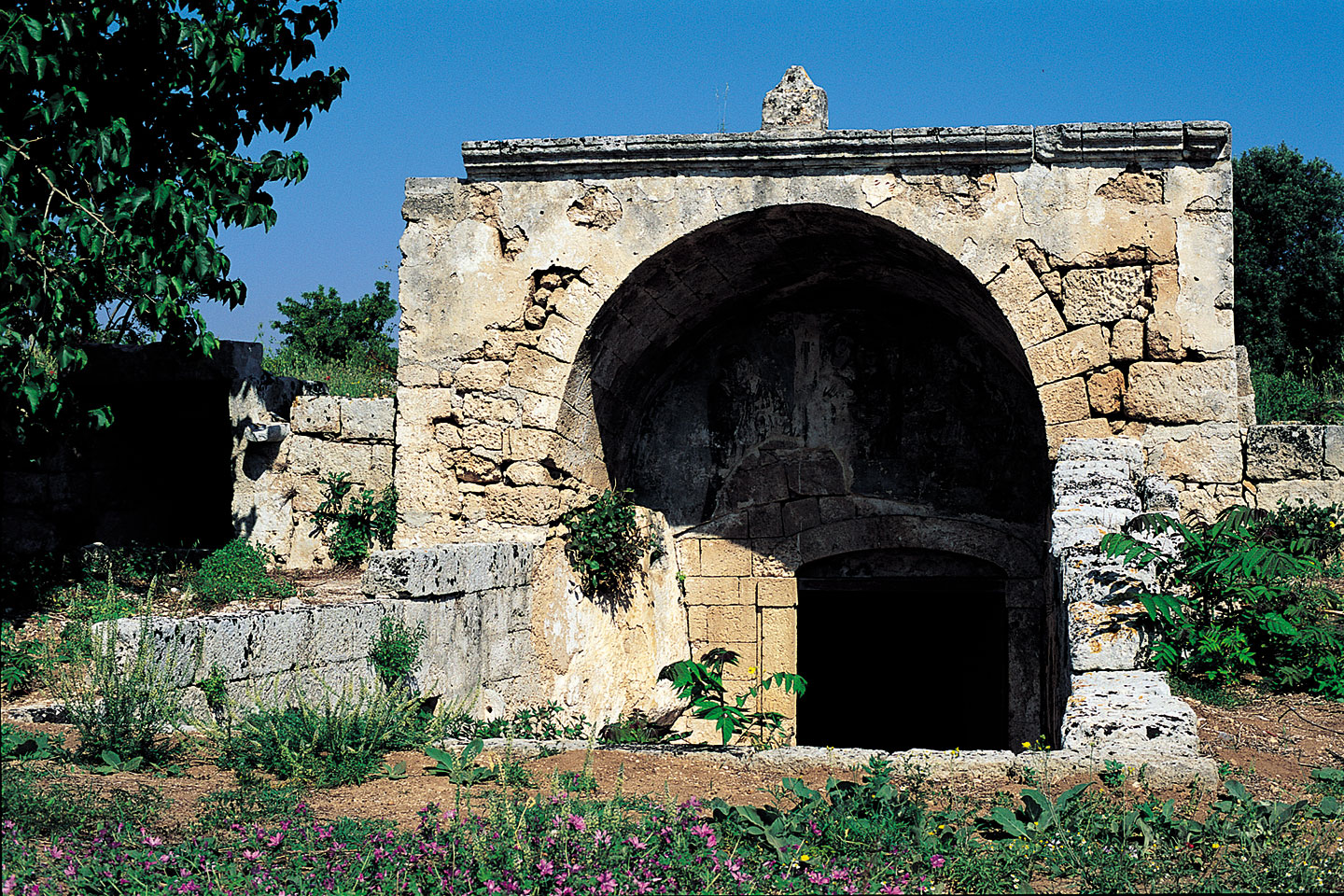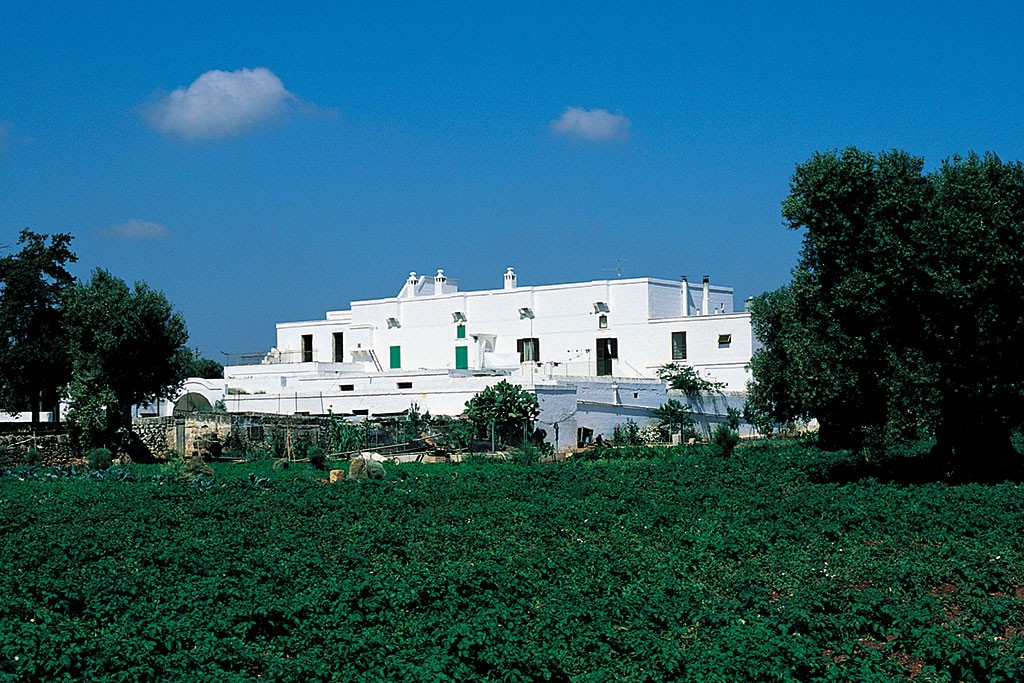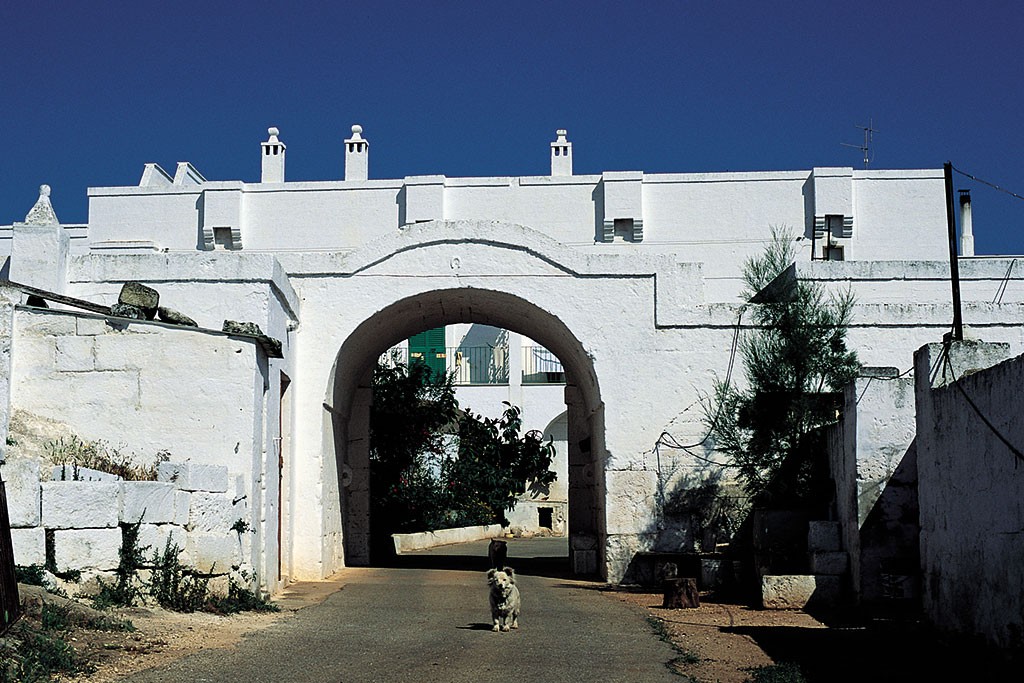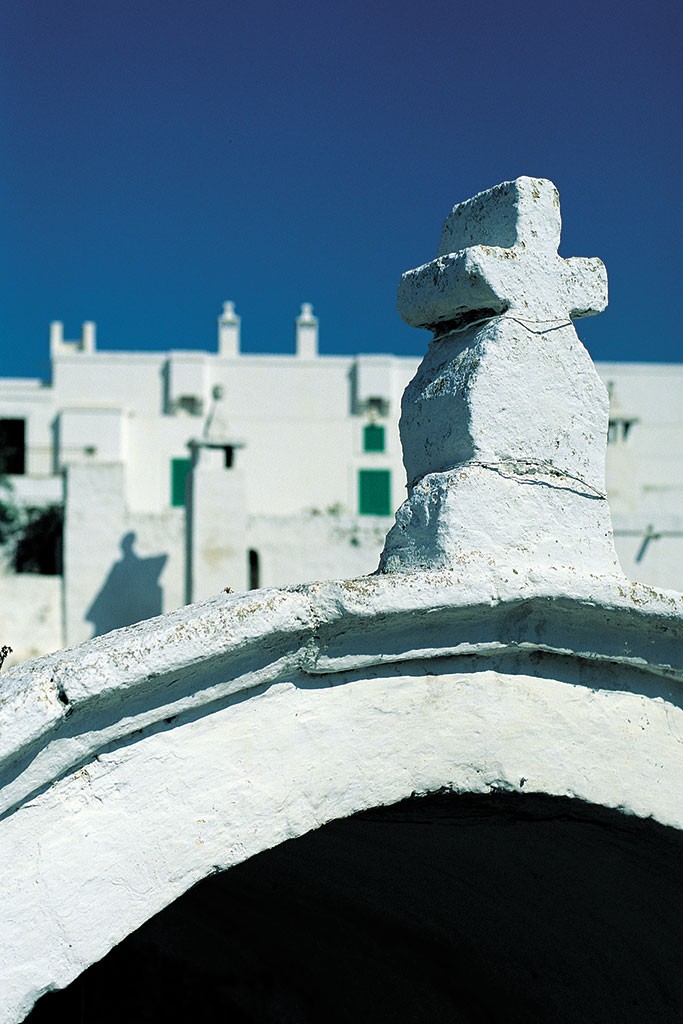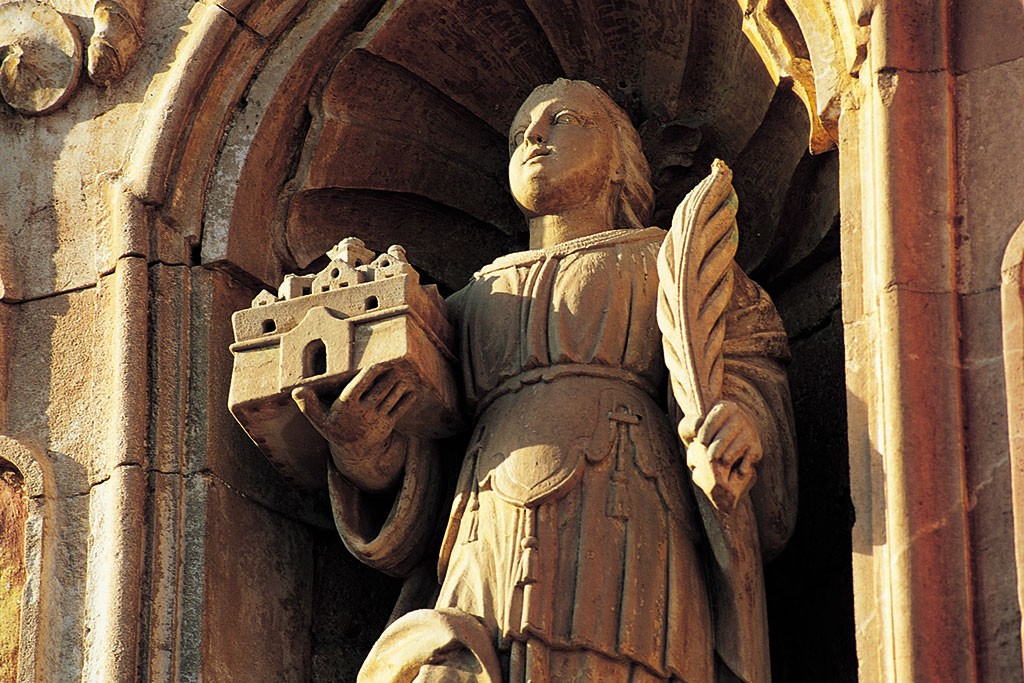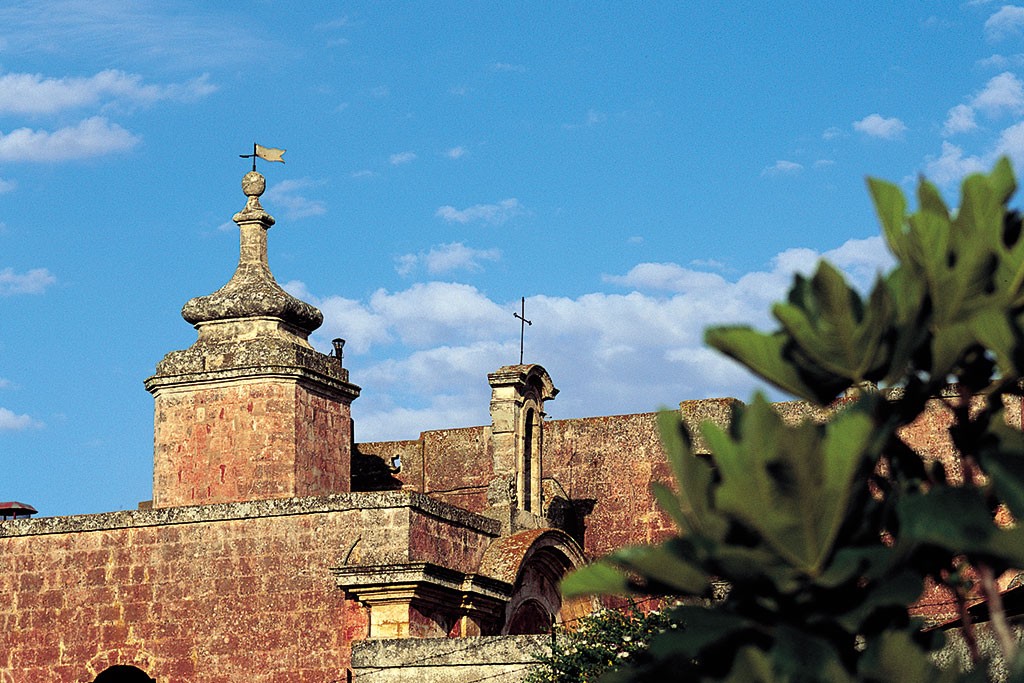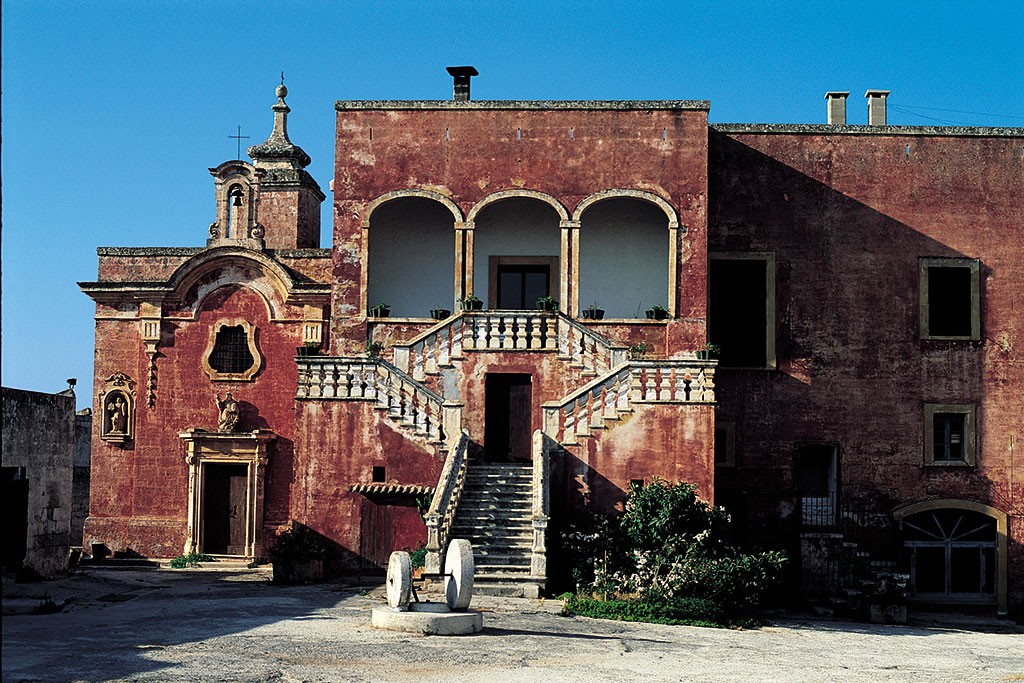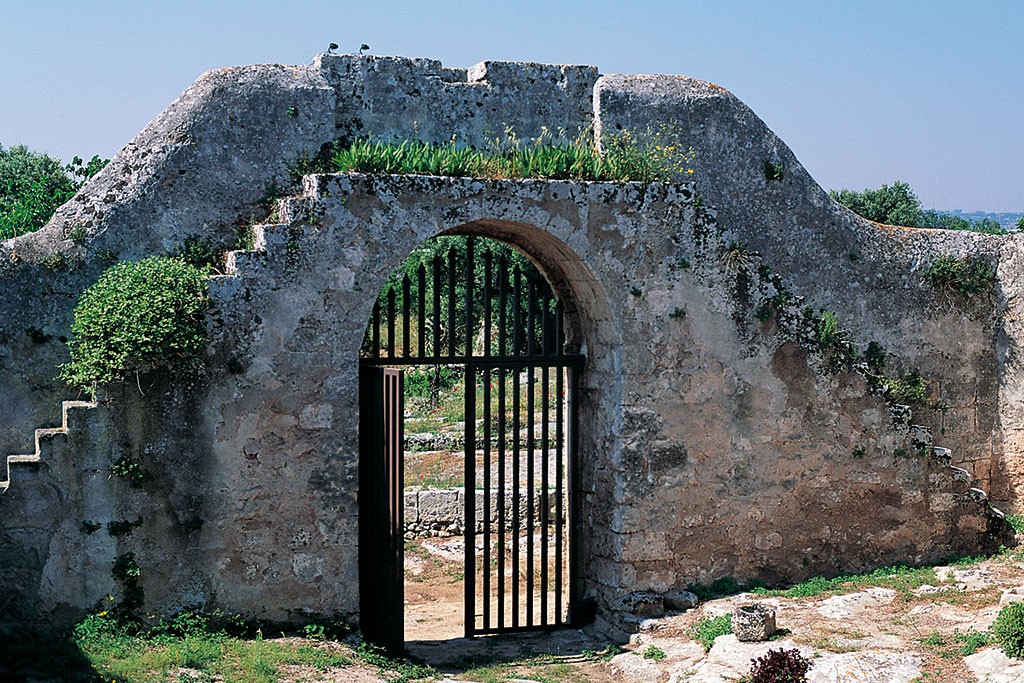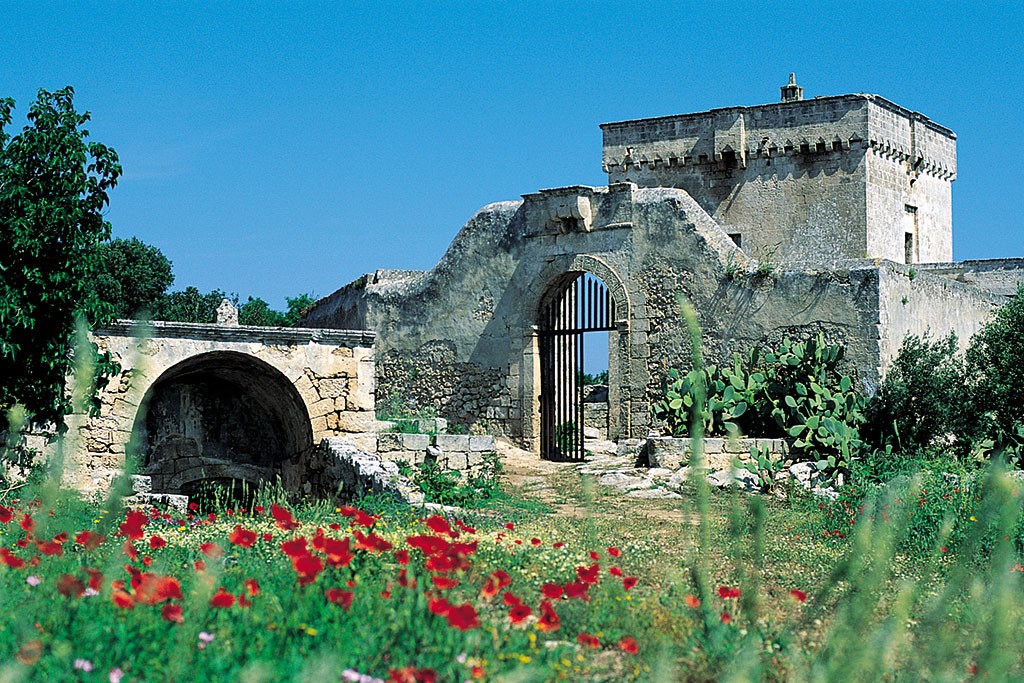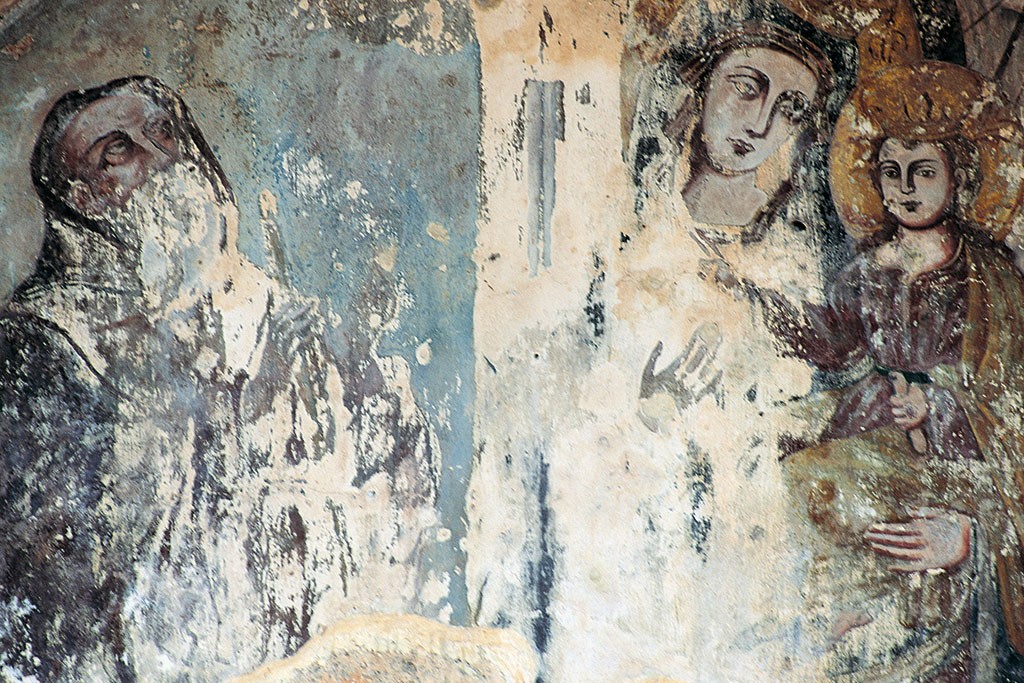Between the sea and the hills there are a number of particularly interesting examples of masserias (farmhouses). Not far from the town you can experience the beauty of the 17th-century Masseria Cataluccio. To complete this short tour of experiential tourism we recommend heading back towards the sea and a visit to Masseria Spina Grande and Masseria Spina Piccola. The two fortified masserias are connected to each other. The oldest one Spina Piccola features a 16th century tower on two floors. In contrast Spina Grande was built out of ‘carparo’ (local limestone) covered with a monumental red velvet façade.
Masseria Catalluccio
Stretched out, like a white oasis at the foot hills of the Murgia, Masseria Cataluccio from an architectural point of view presents an unmistakable typological difference: Despite having no tower, it still possesses several defensive elements for instance, a surrounding wall with is only interrupted by a modest arched gateway. The complex, compact in its entirety, is built of local stone and covered with traditional white lime. Commissioned by a certain ‘Don Cataldo’, of which we know little, and from which it certainly derives its name, was built in the Eighteenth century and underwent expansion in 1882.. This is one of the reasons why it is very difficult to understand its architectural evolution from the original structure. The first floor is accessible by two external staircases with a stone parapet that leads to the balcony-terrace. The wide central prospectus is embellished with four compelling machicolations, in correspondence to the openings. Around the inner courtyard there are a number of enclosed spaces that were probably once used as storehouses, but what especially attracts the attention are the rooms on the ground floor, located beneath the supporting arches of the balcony- terrace. The cross vaults and eight large rooms lend a special beauty to the master floor. Along the road that leads to the masseria, an entrance arch, mounted with a cross carved into the rock, reveals an interesting rupestrian settlement, which is also characterized by an overlooking fresco. The large cave, centrally supported by a number of stone columns, was originally a place of religious worship before being transformed into an oil mill.
Masseria Spina grande
This aristocratic building is characterised by an elegant and harmonious façade that has a majestic double staircase with balustrades and balconies. According archived records for the first half of the 18th century the property remained the possession of the Mazzalorsa family; in 1757 it was bought by the noble family of Martinelli di Mola. Only in 1885 for inheritance reasons it passed over to a branch of the Meo-Evoli family and who are the present owners.The substantial transformation of the farmhouse, developed on three floors, walled and equipped with embrasures, came in 1762, when the body of the original structure was overlaid by a colonnade with staircase. In fact, today on the façade, the embrasures have since disappeared. In order to lighten the front face there are three large arches, from which you can admire the countryside, interrupted only here and there by small elements of urban growth.
Rather unique is the location of the complex, while being close to the sea, it has its main facade facing the hills. The former farmer’s house is situated on a raised ground floor together with many other rooms, while the refined owner’s residence featuring large vaulted rooms is situated on the upper floor. The building is constructed from ‘carparo’ (a local sedimentary limestone rock), an eye-catching red velvet, while the various decorations have been left in the natural stone. The airy courtyard encompasses the areas once used for agricultural needs: ‘lamioni’(rooms once used as storehouses), and sheep pens, today have been transformed into comfortable places for dining and conferences. Even religious worship has been one of the underlying factors that draw in visitors. The small 18th century church, which also accesses the interior of the masseria finely, displays an oriental bell tower. On the façade one can catch sight of the Virgin Mary that supports a sculpture of the masseria and which dates back to before the 18th century. Many niches preserve other sacred sculptures, in a frame of decorative elements such as special windows, crowning arches and festoons.
Masseria Spina piccola
Masseria Spina Piccola consists of a tall, simple fortified tower on two floors and with a square base. It was built in the 16th century and belonged to the Order of Malta. The tower’s cornice is decorated with corbels and triangular lunettes. In sum, with its obvious structural compactness, it follows the simple scheme of the coastal towers necessary to keep watch out to sea. A machicolation placed in the centre of each face serves to protect the entrance and the few windows. Towering towards the blue sky, almost proud of itself, it appears to look with indifference toward the richer and monumental Masseria Spina Grande, sure to be, with its Mediterranean background, a real temptation for an impressionist painter. The original drawbridge was replaced by a stone bridge. From the ground floor instead, there is access to two areas. Internally, the tower in ‘carparo’ has two barrel vaulted rooms, one on the ground floor and the other on the first floor. The tower has been the property of the Mazzalorsa family since the 17th century that converted the nearby cave settlement into an oil mill and cultivated the surrounding land with olives and arable crops. More recently in the tower’s history is evidence of a primitive rupestrian settlement evidenced by the remains of an overhead cross. To the left of the tower, you catch a glimpse of the entrance with a deep staircase down into a ravine, which still features a large fresco of the Virgin Mary and a number of Saints.
Events in Monopoli

From 21 June 2025 six “Nights on the Cathedral Square”
20 June 2025Opening night with the preview of the Ritratti Festival and the Rota Conservatory Orchestra This year too, Monopoli is preparing to…
Read More
Guttuso and Picasso: Comparing Visions at the Castello Carlo V
20 February 2025From 5 March to 3 August 2025, Castello Carlo V will host an unprecedented event: Renato Guttuso and Pablo Picasso –…
Read More
Destination Christmas: immersive installations, shows and events
28 November 2024The show by Pino Campagna and Antonio Stornaiolo, accompanied by the aerial dance performance by the Eleina D Company and the…
Read More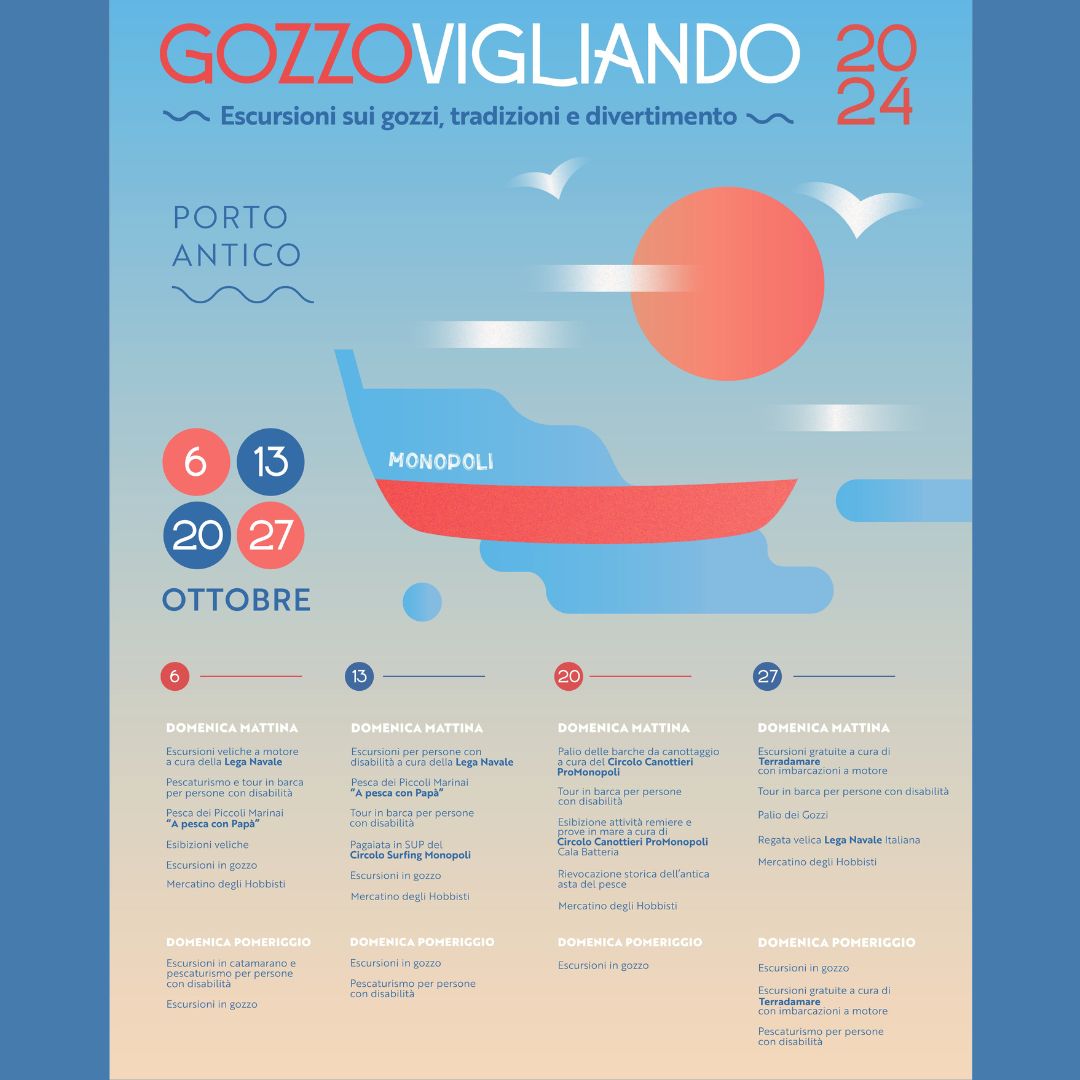
“Gozzovigliando” returns on Sundays in October
4 October 2024Gozzovigliando returns for a new edition that promises to take the public to discover the most authentic roots of the Apulian…
Read More
From June 16 – 21 “Prospero Fest” takes place at the Old Port (Porto Vecchio)
30 May 2024Prospero Fest, the event promoted by the Department of Culture of the Municipality of Monopoli, to be held from 16 to…
Read More
Visit Monopoli: the presentation video for the 2024 events season.
7 February 2024This year again, the City of Monopoli participated in BIT24, the International Tourism Exchange, to present the calendar of events for…
Read More
